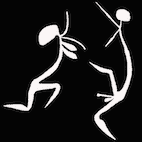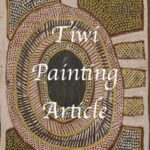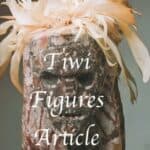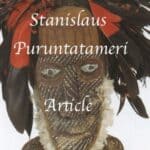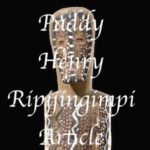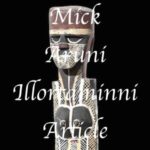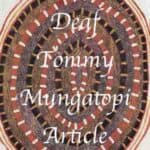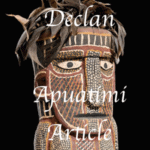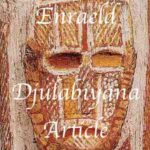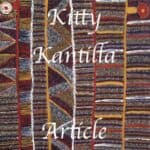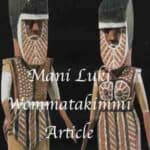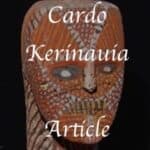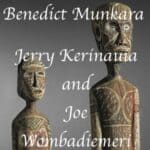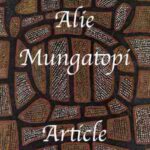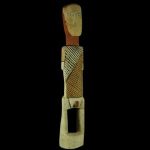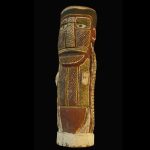Declan Apuatimi – Tiwi Master Sculptor and Bark Painter
Declan Apuatimi (1930 – 1985) stands among the most significant artists of the Tiwi Islands, celebrated for his innovative bark paintings and sculptural carvings that define the Pukumani and Kurlama ceremonial traditions. Born at Iminulapi on Bathurst Island, north of Darwin, Declan grew up deeply embedded in the maritime and cultural life of the Tiwi people. While he spent much of his adult life in the township of Nguiu, his country was Munupi, on the north-west coast of Melville Island. This connection to ancestral land informed both his ceremonial responsibilities and his artistic vision.
If you have a Declan Apuatimi sculpture or bark painting to sell please contact me. If you want to know what your Declan sculpture is worth to me please feel free to send me a Jpeg. I would love to see it.
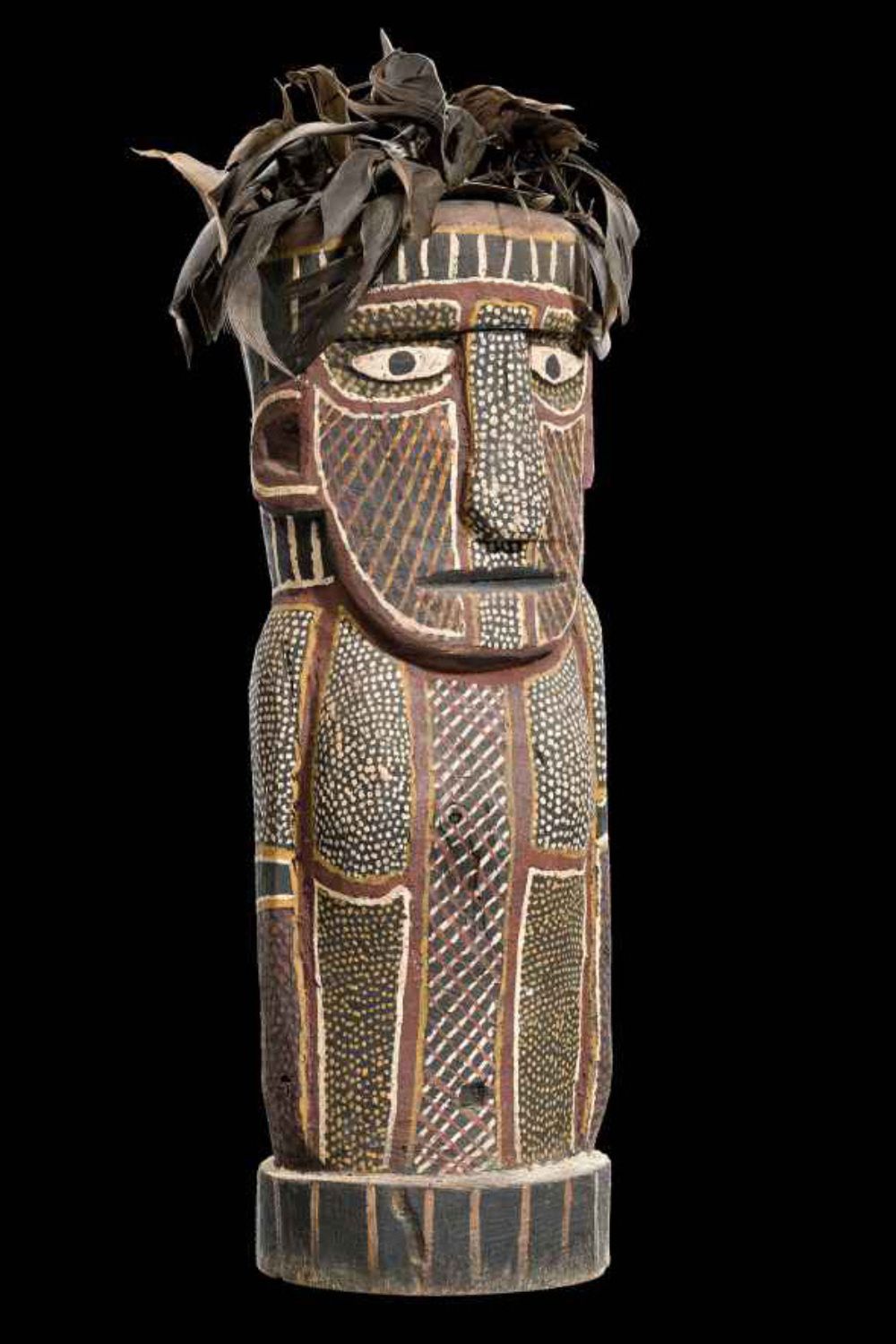
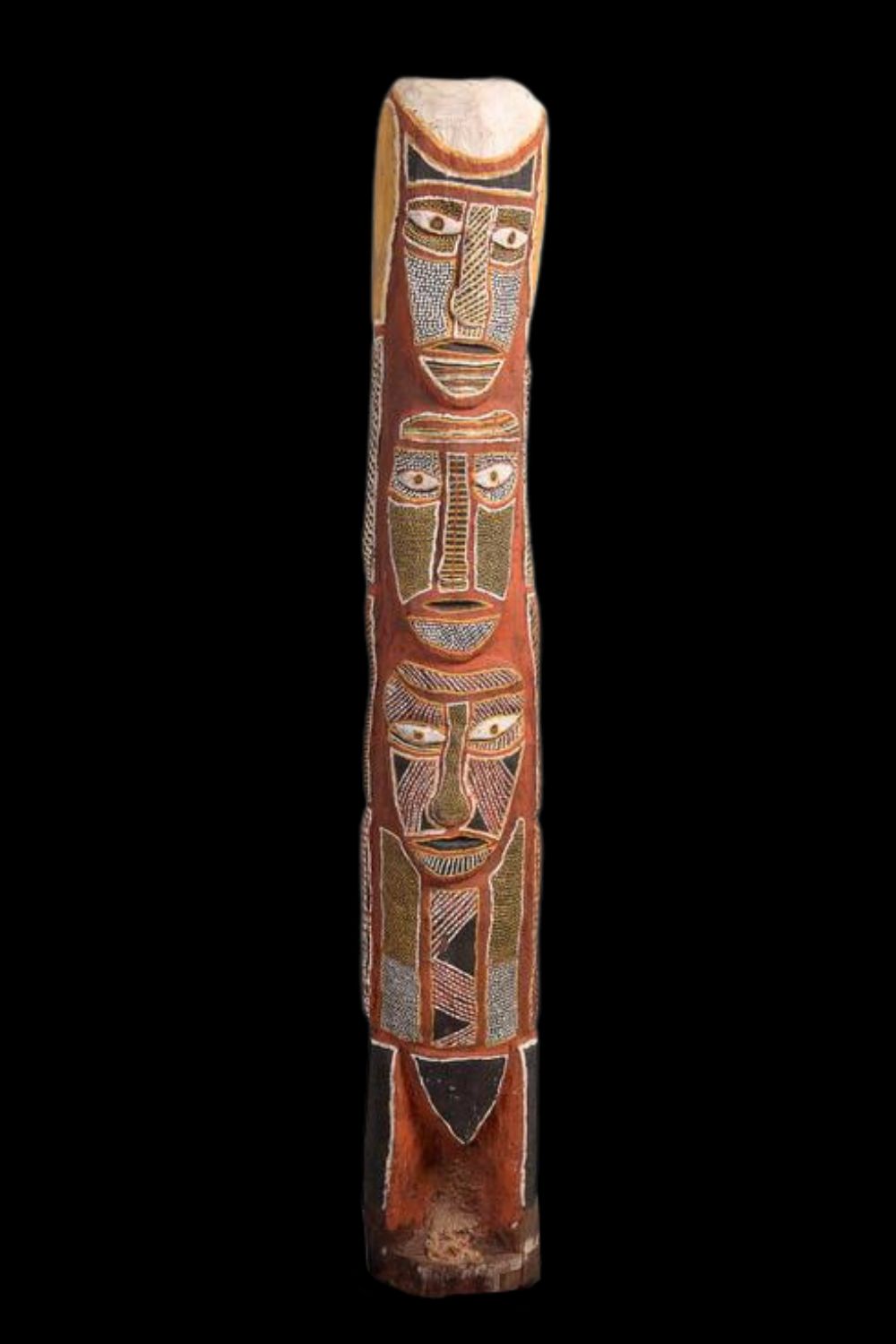
Declan Apuatimi References
s.
Style
Declan Apuatimi is celebrated for his ironwood sculptures, which exemplify both ceremonial function and artistic innovation. Burial posts, once shaped with selective burning and mussel shell scraping, evolved under Declan’s hand into striking figurative forms. He was among the first Tiwi artists to paint three-tiered faces stacked atop one another on a single post—a stylistic innovation that became a hallmark of his work. Earlier carvings often featured somber ochre tones, but by the 1970s, Declan’s palette expanded to brighter, purer pigments, with careful separation to maintain clarity of design.
His sculptural forms are characterized by solid, muscular figures with geometric panels and almond-shaped eyes that seem to gaze beyond the material world, evoking both ancestral presence and Tiwi cosmology. Declan Apuatimi sculptures often have heads the same size as the body. Declan also carved birds. They tend to have white bodies and are plainly decorated other than the wings. The wings are elaborately designed in motifs previously used for skin designs.
Although carving remained his preferred medium, Declan also produced tiwi paintings on bark, translating ceremonial designs onto bark with the same precision as his woodwork. His smaller barks, such as Body Painting (c.1980, 24.5 x 49 cm), demonstrate delicate handling of natural pigments, while larger works, including Crocodile (c.1978, 158 x 95 cm), show commanding compositional control and vibrant color. These works are increasingly recognized for their rarity and technical sophistication. His barks are collectible but not as popular with collectors as some other artists such as Alie or Deaf Tommy.
Biography
Declan Apuatimi was born at Iminulapi in the north-west of Bathurst Island. Though this was his home, his actual country, was Munupi on the north-west coast of Melville Island. As a boy, he had learned how to weave fine ceremonial armlets. He also learned to carve delicate barbed ceremonial spears, fluted clubs, and the burial posts for Pukumani ceremony. In the 1930’s Declan worked with Japanese, Malay and Filipino pearling boats. With the onset of World War II the pearling era came to an abrupt end and Declan went to a RAAF army base in Darwin. He did not return to Bathurst Island until the war ended.
Declan started carving for sale in the late 1950’s, under the encouragement of Father John Cosgrove. The market for these objects was mainly anthropologists, museums, and art galleries. It wasn’t until the 1960’s, that production increased for an outside market. Declan continued to carve funeral posts and began carving his distinctive figurative forms.
During the 1970’s Declan consolidated his artistic career and technique following the establishment of Tiwi Pima Art. Tiwi Pima Art was a community-based body responsible for marketing traditional art and craft of the Tiwi.
In 1984 craft adviser Mick Reid collected his work for the first ever Tiwi one-man exhibition. Lord Alistair McAlpine purchased the entire exhibition. Two years after his death there was a solo retrospective touring exhibition Declan- A Tiwi Artist. It was at the Araluen Art Centre in Alice Springs.
Apuatimi is sometimes spelled Declan Napuatimi
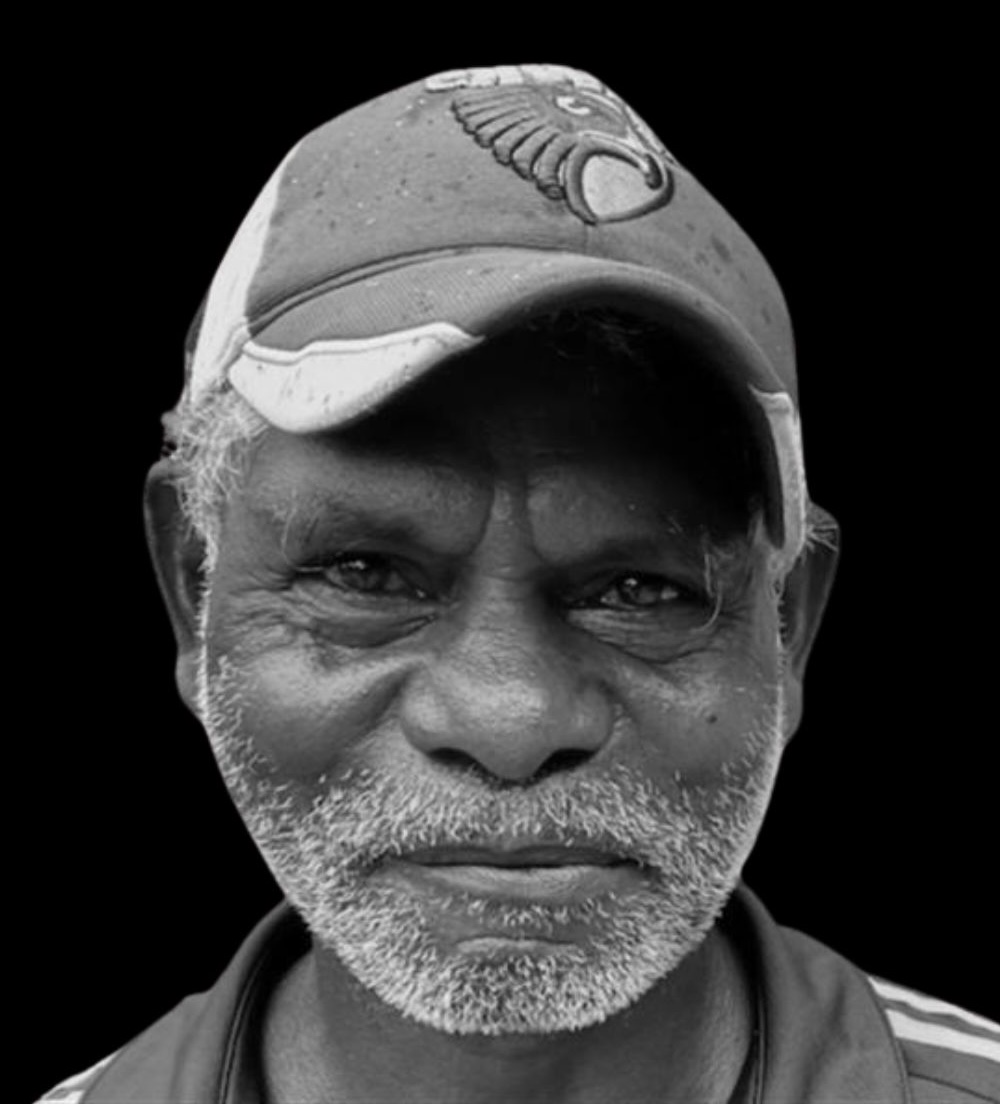
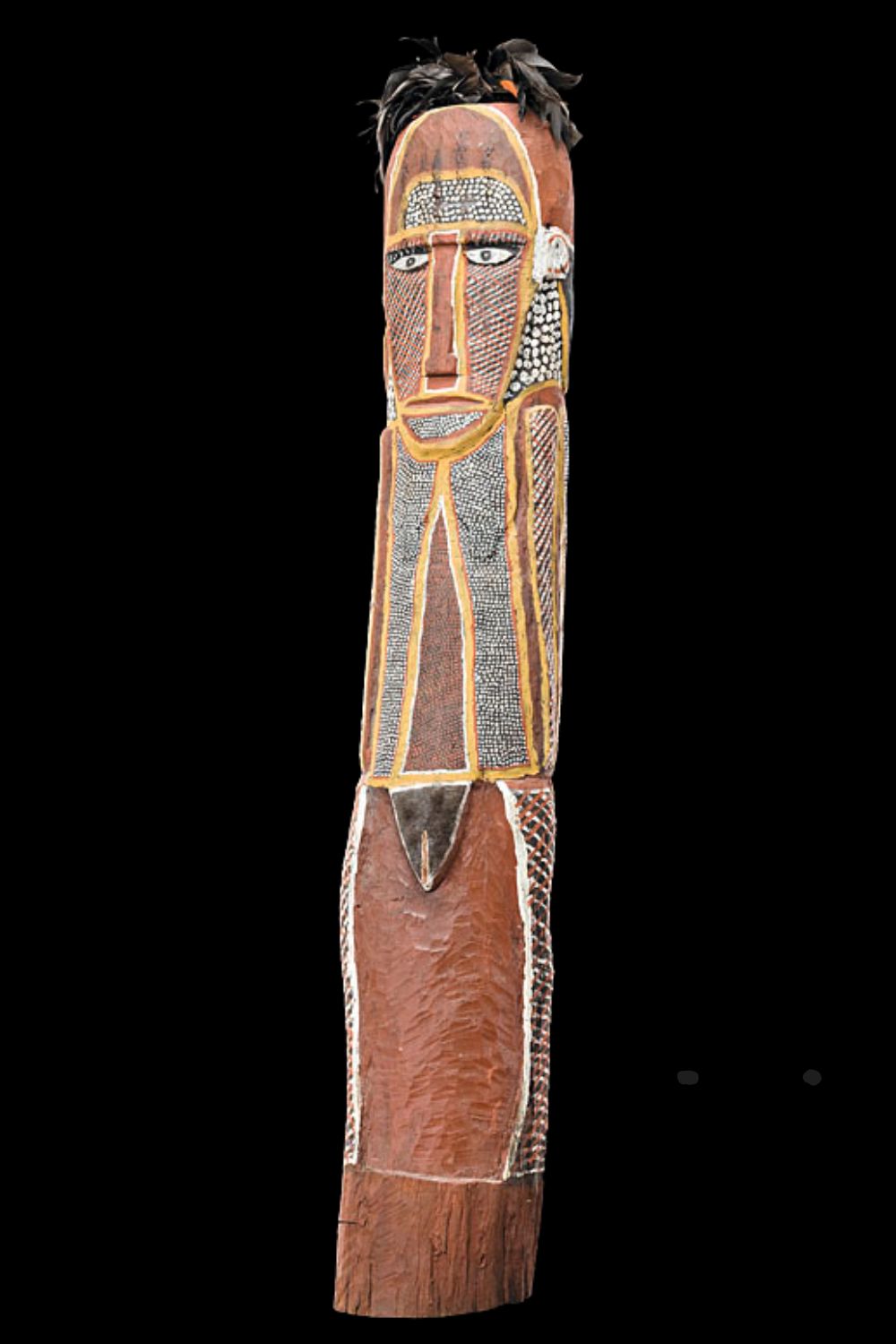
Market Recognition and Exhibitions
Declan Apuatimi played a pivotal role in establishing Tiwi art in the Australian and international art market during the 1970s and early 1980s. He was one of the most prolific artists working with Tiwi Pima Art, a community-based organization founded in 1972 to market traditional Tiwi art. In 1984, craft adviser Mick Reid curated the first-ever one-man exhibition of Declan’s work, which was purchased entirely by Lord Alistair McAlpine.
After his death in 1985, Declan’s reputation continued to grow. In 1987, the Araluen Art Centre curated a touring solo retrospective, Declan – A Tiwi Artist, cementing his status as a pioneering figure in Tiwi cultural expression. His sculptures and bark paintings have been collected by major institutions and private collectors alike, admired both for their ceremonial authenticity and artistic excellence.
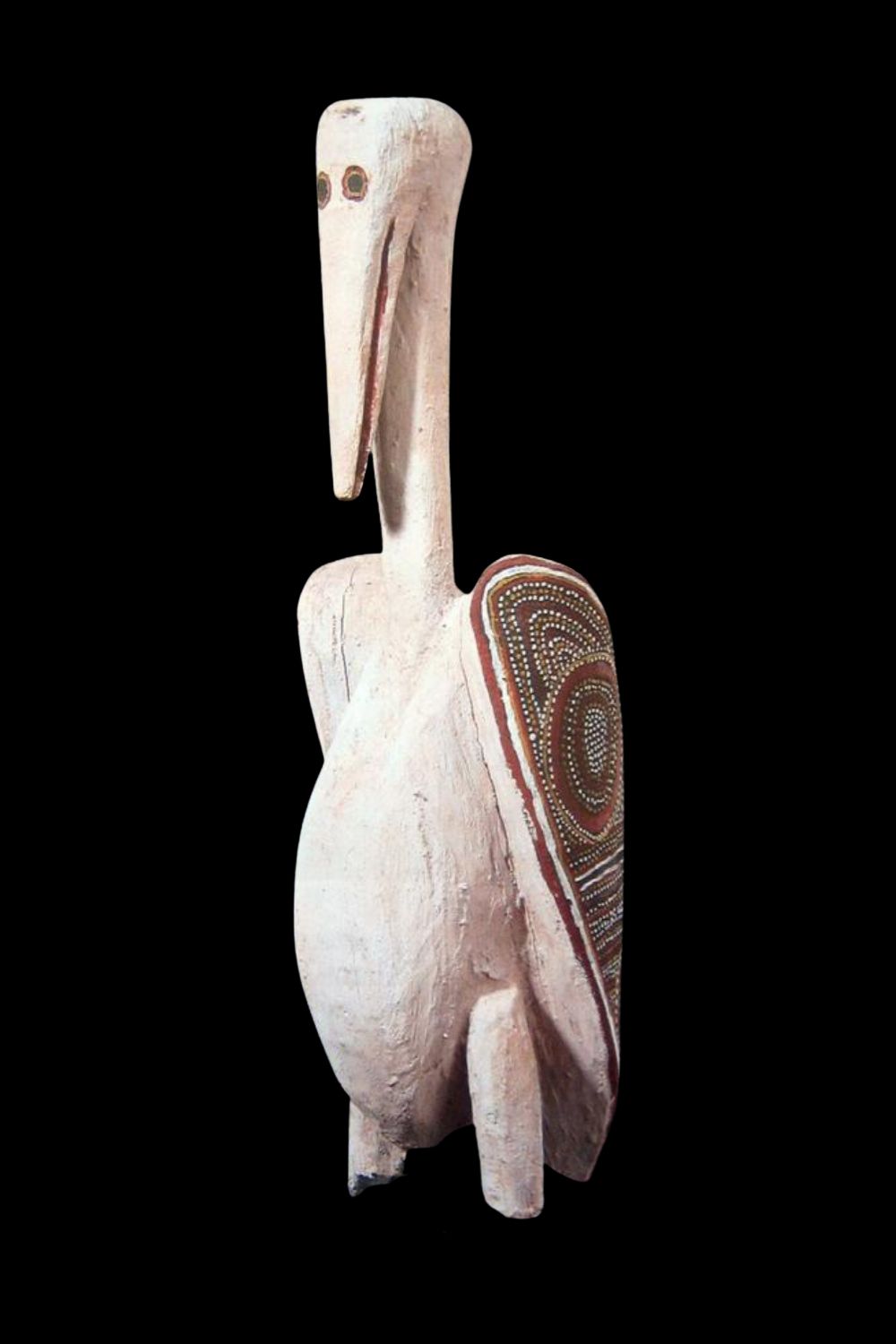
Auction Record and Collectibility
On the secondary market, Declan Apuatimi’s sculptures and bark paintings are highly sought after. His record price for a carved Pelican (c.1968) from the Rothmans of Pall Mall Collection exceeded the pre-sale estimate of $3,000–5,000. Other works, including Female Figure (c.1975), have sold for $6,000, and undated carvings such as Purukuparli have achieved $12,000. Bark paintings, though less frequently offered, demonstrate strong collector interest, with works like Crocodile (c.1978) realizing $12,000.
Declan’s works are rare, with typically only one or two appearing at auction each year, enhancing their value to collectors. The combination of ceremonial authenticity, technical skill, and historical significance makes any Declan Apuatimi sculpture or bark painting a highly desirable addition to public or private collections.
Artistic Legacy
Declan Apuatimi’s work represents a bridge between traditional Tiwi ceremonial practice and the contemporary art market, demonstrating the enduring power of ancestral stories expressed through sculpture and bark painting. His contributions to the Tiwi art movement remain vital for understanding the evolution of Indigenous Australian art in the 20th century.
He was a master of form, line, and symbolic design, whose works convey the profound spiritual and cultural knowledge of the Tiwi people. Each sculpture and bark painting not only embodies ceremonial meaning but also stands as a testament to Declan’s innovative spirit, dedication, and technical mastery.
For collectors and connoisseurs of Aboriginal art, Declan Apuatimi’s works offer an exceptional opportunity to own a piece of Tiwi cultural heritage—each piece rare, historically significant, and executed with the artistic sophistication of a master carver and painter. As one of the most revered figures in Tiwi Pima Art, his legacy continues to shape contemporary understandings of Aboriginal art and remains central to both scholarly study and high-level collecting.
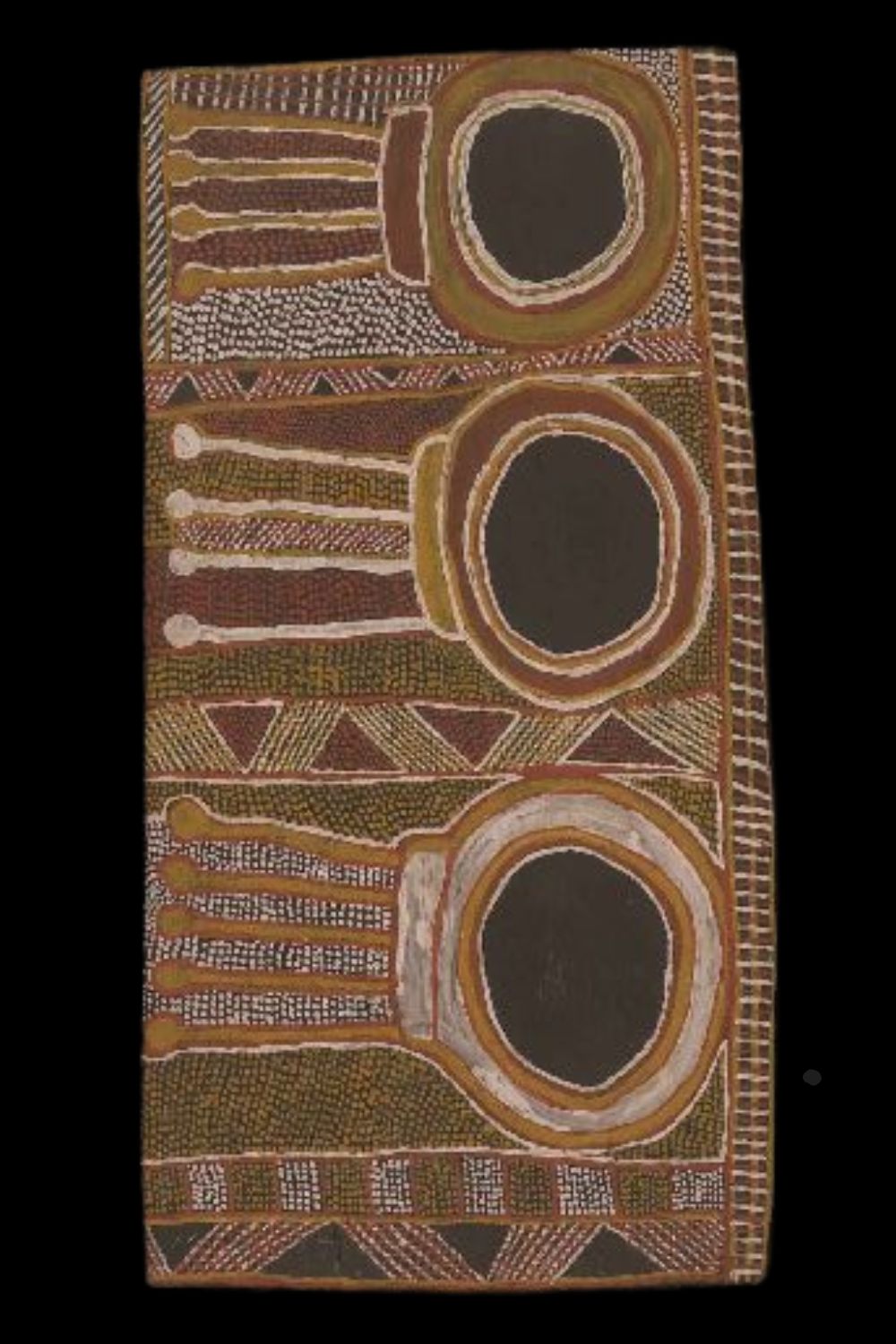
All images in this article are for educational purposes only.
This site may contain copyrighted material the use of which was not specified by the copyright owner.
